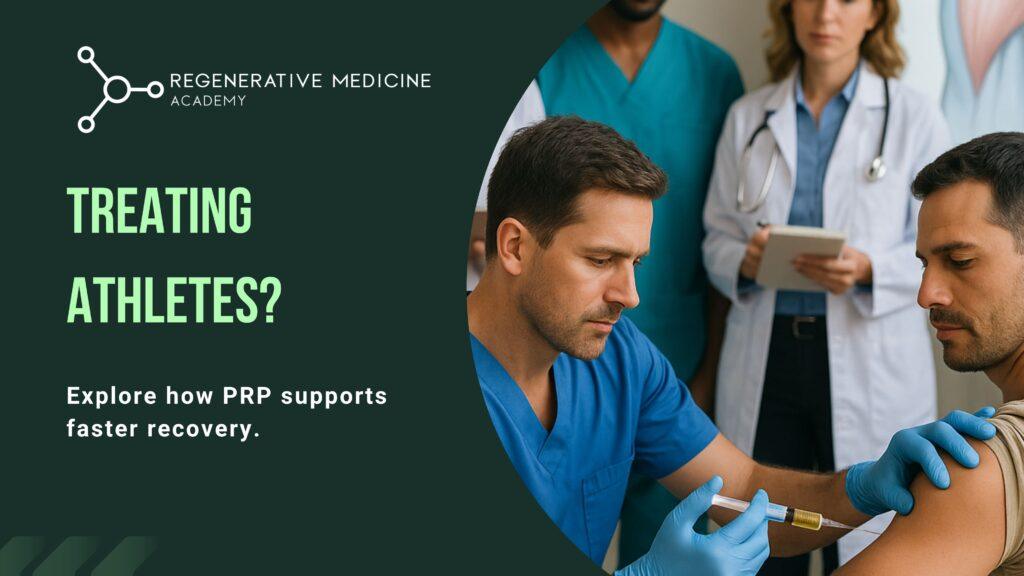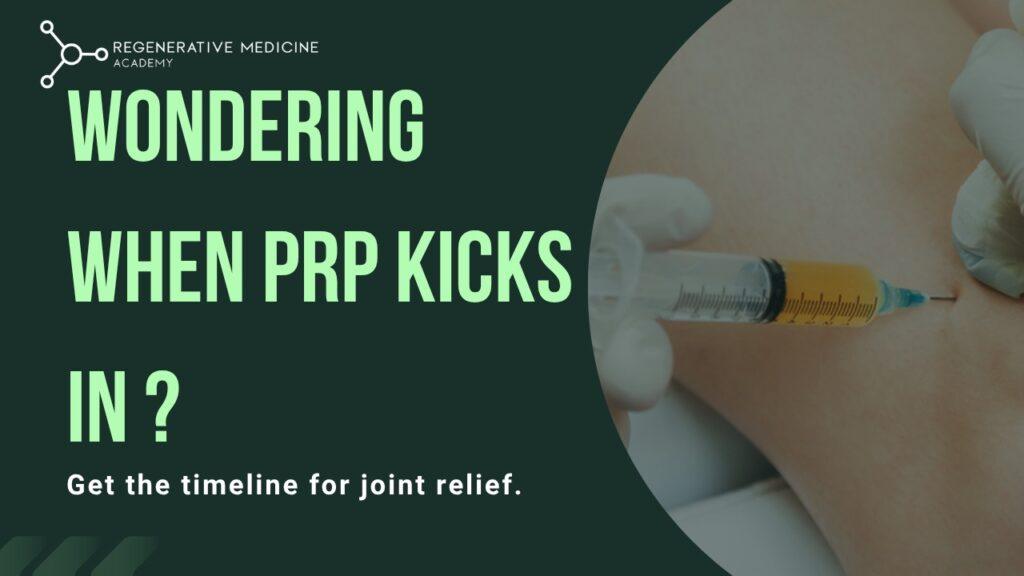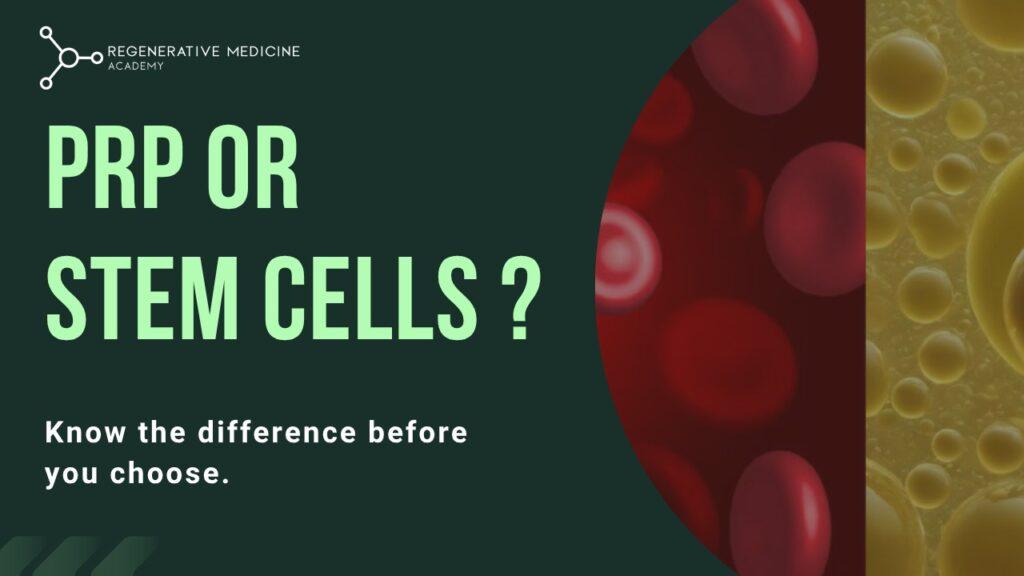Why Sports Rehab Clinicians Should Understand PRP’s Role
Sports injuries are common—but getting athletes back to their game quickly and safely is anything but simple. Whether it’s a shoulder strain, torn ligament, or chronic knee pain, treatment approaches must balance effective recovery with minimal downtime. Traditional rehab, rest, and medications are important—but regenerative medicine is opening new doors.
One of the most promising tools? Platelet-rich plasma (PRP) therapy.
For sports rehab clinicians and physical therapists, understanding how PRP helps with sports injuries and recovery isn’t just valuable—it’s becoming essential.
What Is PRP and How Does It Work?
PRP is made by drawing a small sample of a patient’s blood and spinning it in a centrifuge to isolate a concentrated layer of platelets and growth factors. These components are key players in the body’s healing response.
Once injected into an injured area—like a joint, tendon, or ligament—this plasma kickstarts biological repair, reduces inflammation, and stimulates tissue regeneration.
Understanding how PRP helps with sports injuries and recovery means recognizing that it supports the body’s natural ability to heal—without introducing foreign substances.
How PRP Helps with Sports Injuries and Recovery: What Research Tells Us
Here’s a breakdown of current clinical evidence explaining how PRP helps with sports injuries and recovery across different tissue types:
1. Tendons and Ligaments
Injuries like tennis elbow, Achilles tendinopathy, and plantar fasciitis are notoriously difficult to heal. PRP shows promise in these cases by:
- Stimulating collagen regeneration
- Increasing blood supply to poorly vascularized tissues
- Reducing chronic inflammation
A meta-analysis published in Sports Health found PRP to significantly improve pain and function in chronic tendinopathies compared to corticosteroids or placebo.
2. Muscle Injuries
Strains and muscle tears are common in high-performance athletes. Early evidence suggests that PRP may accelerate return-to-play timelines by enhancing muscle fiber regeneration. While more research is ongoing, its use is increasing in elite sports medicine clinics.
3. Joint Injuries and Arthritis
PRP is especially valuable for treating prp for joint pain and early osteoarthritis. The plasma’s growth factors help reduce inflammation in the joint capsule and may even slow cartilage degeneration.
In a 2021 study published in Arthroscopy, patients with mild to moderate knee osteoarthritis experienced greater improvement in pain and function with PRP compared to hyaluronic acid injections—lasting up to one year post-treatment.
Shoulder and Knee Focus: Where PRP Really Works
Let’s take a closer look at PRP applications for two of the most commonly injured joints in sports rehab.
PRP for Shoulder Injuries
Rotator cuff tears, impingement, and overuse tendinopathy are top reasons athletes seek plasma shots for shoulder recovery.
Studies show that PRP:
- Reduces pain levels
- Improves range of motion
- Enhances structural healing in partial tears
For example, a controlled trial in the Journal of Orthopaedic Research found that PRP-treated patients showed improved tendon quality and reduced re-injury rates six months after injection.
PRP for Knee Pain and Instability
When applying prp for joint pain, particularly in the knee, clinicians have observed:
- Reduced swelling and inflammation
- Faster recovery post-meniscal or ACL injuries
- Increased strength and stability with rehab
This aligns closely with how PRP helps with sports injuries and recovery—by supporting biological healing during and after structured therapy.
How PRP Helps with Sports Injuries and Recovery in Real Practice
To really understand how PRP helps with sports injuries and recovery, rehab professionals should think beyond the injection. It’s a tool—but results depend on how it’s integrated into a comprehensive care plan.
1. Patient Evaluation
Not every injury needs PRP, and not every patient is a candidate. Consider:
- Injury type and severity
- Duration of symptoms (acute vs. chronic)
- Age, health status, and activity level
Educate patients early. Setting realistic expectations improves satisfaction and adherence to post-injection care.
2. Multimodal Rehab Integration
PRP works best when paired with:
- Manual therapy
- Targeted strengthening and mobility work
- Gradual return-to-sport progression
This integrative approach is where how PRP helps with sports injuries and recovery comes to life—not just through biology, but through movement and guided therapy.
3. Follow-Up and Adjustments
Track patient outcomes. Consider follow-up injections if needed, especially in chronic cases. Document progress through standardized measures (like VAS or functional scores) to demonstrate impact.
What About Safety and Regulation?
PRP is generally safe when properly prepared and administered. Minor discomfort or swelling post-injection is common but temporary. Since PRP is autologous (from the patient’s own body), risk of rejection or infection is minimal.
However, clinicians must:
- Use FDA-compliant preparation devices
- Follow sterile technique
- Stay updated on evolving regulations and clinical protocols
Understanding these details is as important as understanding how PRP helps with sports injuries and recovery, especially for those adding PRP into a licensed clinical setting.
Final Word: What Should Clinicians Keep in Mind?
- Not a standalone cure: PRP supports healing but doesn’t replace exercise, rest, or surgical repair where necessary.
- Timing matters: Early intervention for chronic injuries tends to yield better results.
- Evidence is growing: While some studies remain inconclusive, the body of supportive literature is expanding—particularly for joint and tendon injuries.
Learning how PRP helps with sports injuries and recovery equips you to make informed decisions and provide more personalized, regenerative care.
Ready to Get PRP-Certified and Expand Your Toolkit?
If you’re a physical therapist or sports rehab clinician aiming to confidently use PRP in your practice, you need the right foundation.
At Regenerative Medicine Academy, we offer in-depth, practical PRP training for sports and orthopedic applications. Learn:
- Injection techniques specific to sports injuries
- Patient selection and safety protocols
- How to combine PRP with your current rehab methods
👉 Explore our PRP training courses today and start transforming your clinical outcomes with regenerative strategies that work.



